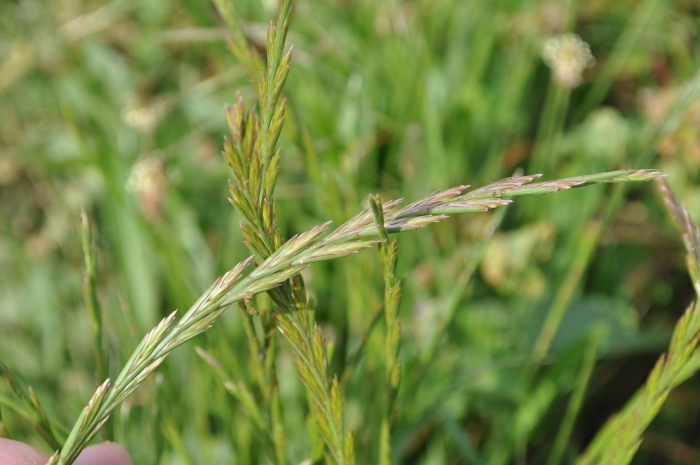Annual Ryegrass
(Lolium rigidum)
Annual Ryegrass (Lolium rigidum)
/
/

© Josep Gesti
CC BY-SA 4.0
Image By:
© Josep Gesti
Recorded By:
Copyright:
CC BY-SA 4.0
Copyright Notice:
Photo by: © Josep Gesti | License Type: CC BY-SA 4.0 | License URL: http://creativecommons.org/licenses/by-sa/4.0/ | Uploader: josepgesti | Publisher: iNaturalist |
























Estimated Native Range
Summary
Lolium rigidum, commonly known as annual ryegrass or Wimmera ryegrass, is an annual grass native to temperate regions including southern Europe, northern Africa, the Middle East, and the Indian subcontinent. It typically inhabits open fields, roadsides, and disturbed areas. This species is well-adapted to a variety of soil types but thrives in well-drained, fertile soils. It grows in open tussocks up to 1 meter tall with fibrous roots and has a bunch-forming growth habit. The leaves are glossy, dark green, and the plant produces a profusion of seeds that can display dormancy when freshly shed. Flowering occurs in spring and early summer, with the flowers being less showy and primarily wind-pollinated.
Annual ryegrass is valued for its rapid growth and is widely used as a forage crop, cover crop, and in erosion control. It is also utilized for overseeding warm-season grasses in cooler months due to its cold tolerance. In cultivation, it requires full sun to light shade and can tolerate a range of soil conditions, though it prefers moist, well-drained soils. It is important to manage its growth to prevent it from becoming weedy or invasive. In Australia, it has become a serious and economically damaging weed in agricultural systems. It can hybridize with both perennial ryegrass and Italian ryegrass, which may lead to genetic pollution of these species.CC BY-SA 4.0
Annual ryegrass is valued for its rapid growth and is widely used as a forage crop, cover crop, and in erosion control. It is also utilized for overseeding warm-season grasses in cooler months due to its cold tolerance. In cultivation, it requires full sun to light shade and can tolerate a range of soil conditions, though it prefers moist, well-drained soils. It is important to manage its growth to prevent it from becoming weedy or invasive. In Australia, it has become a serious and economically damaging weed in agricultural systems. It can hybridize with both perennial ryegrass and Italian ryegrass, which may lead to genetic pollution of these species.CC BY-SA 4.0
Plant Description
- Plant Type: Grass
- Height: 1-3 feet
- Width: 1-2 feet
- Growth Rate: Rapid
- Flower Color: N/A
- Flowering Season: Spring
- Leaf Retention:
Growth Requirements
- Sun: Full Sun, Part Shade
- Water: Medium
- Drainage: Fast, Medium, Slow
Common Uses
Erosion Control, Low Maintenance
Natural Habitat
Temperate regions including open fields, roadsides, and disturbed areas
Other Names
Common Names: Rigid Ryegrass, Persian Darnel, Wimmera Ryegrass, Annual Ryegrass, Common Darnel
Scientific Names: , Lolium rigidum, Arthrochortus loliaceus, Crypturus loliaceus, Festuca aleppica, Festuca aleppica, Lolium arenarium, Lolium arvense var. rigidum, Lolium crassiculme, Lolium cylindricum
GBIF Accepted Name: